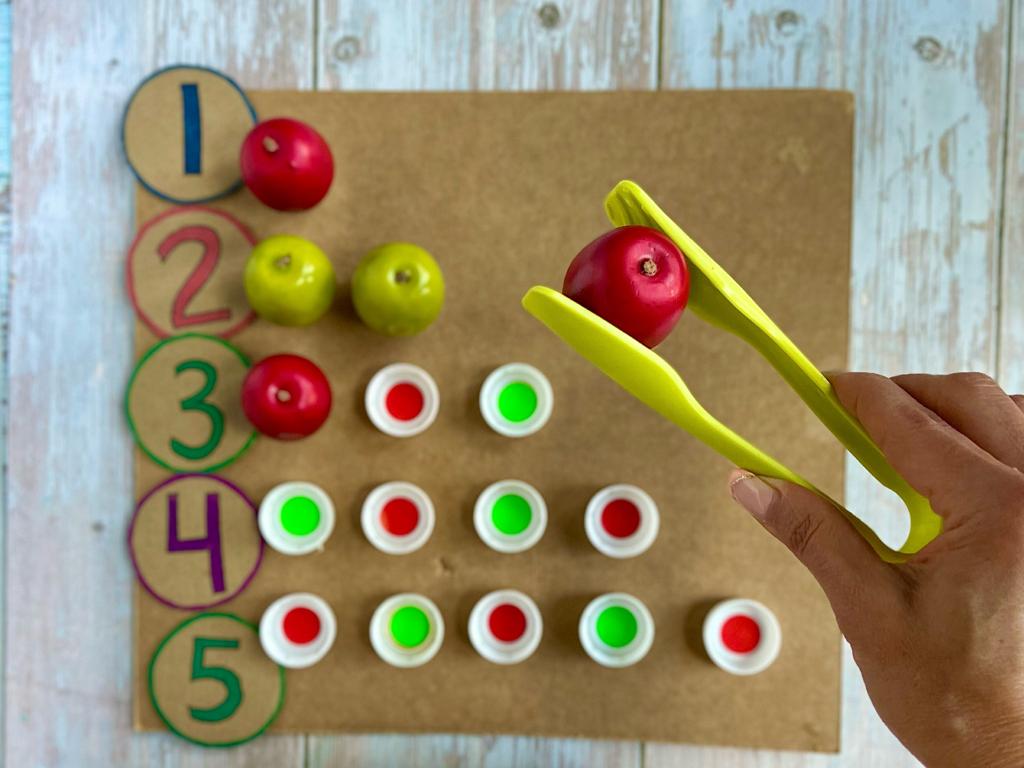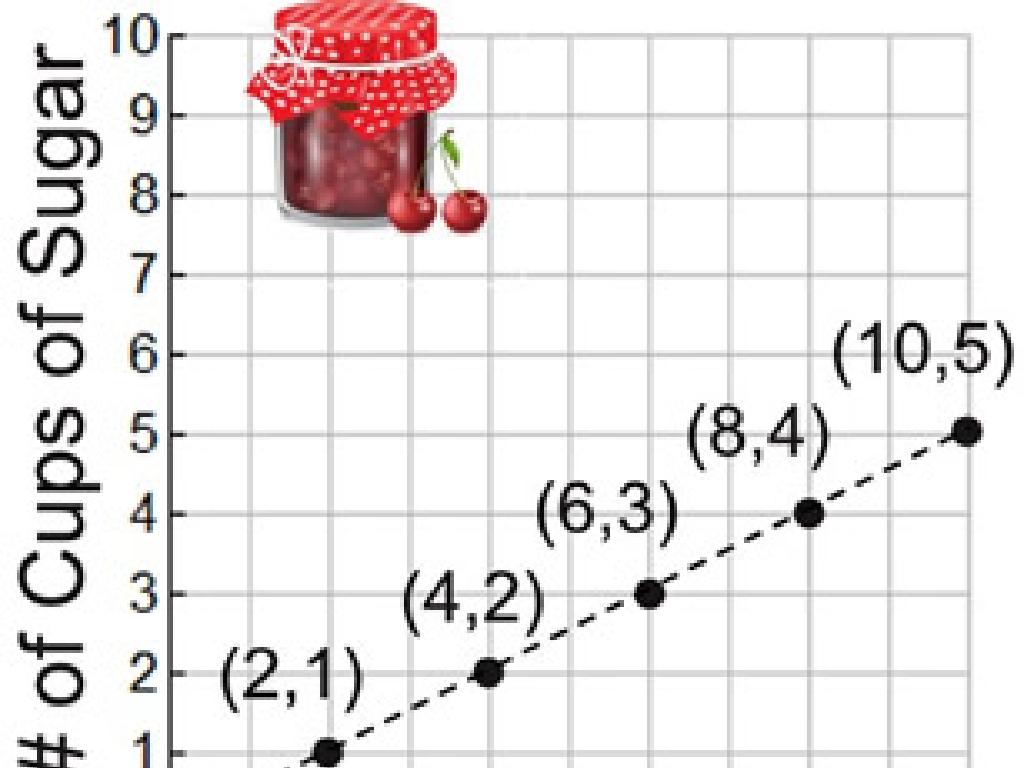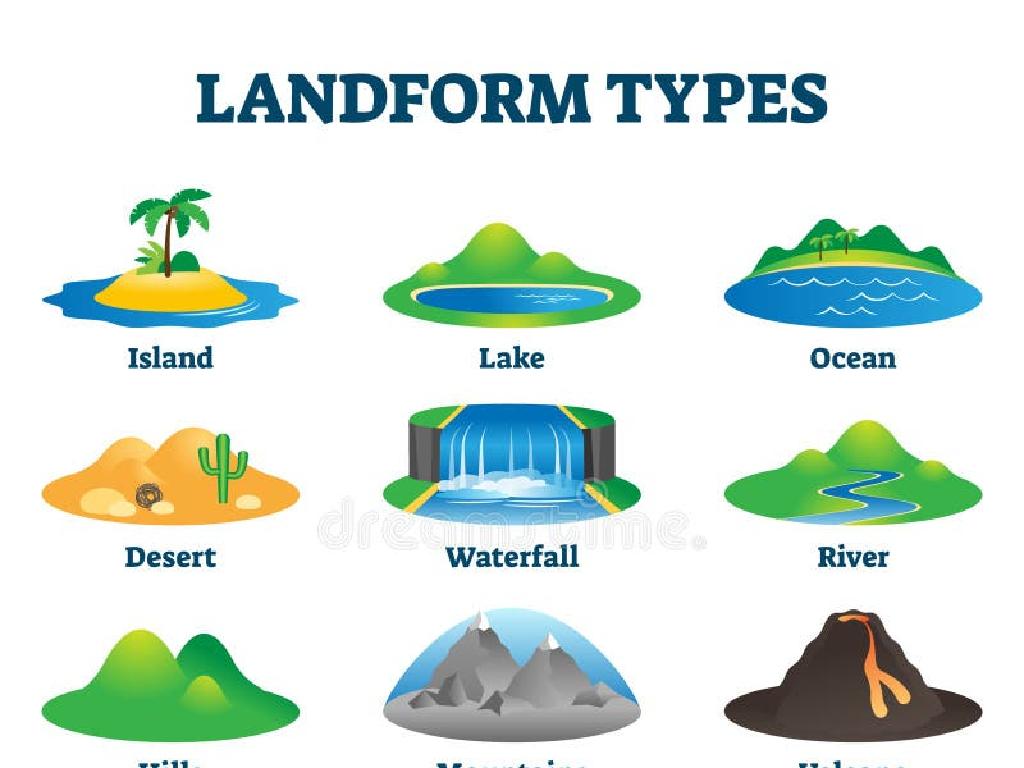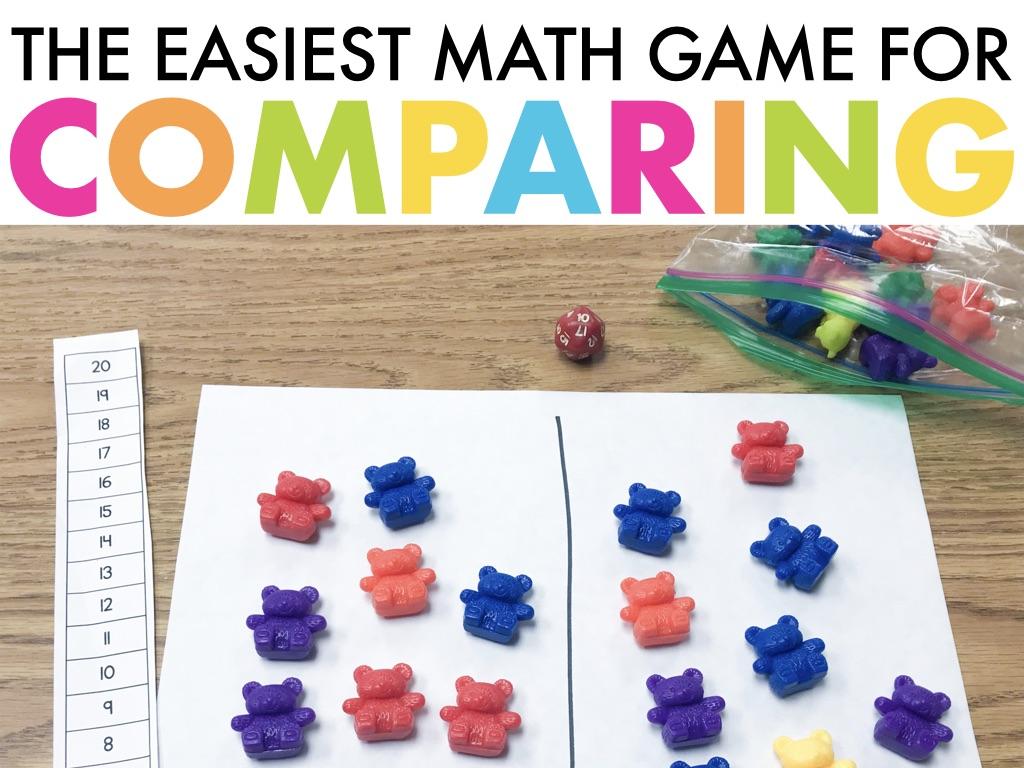Form Regular Plurals With -S, -Es, And -Ies
Subject: Language arts
Grade: Fourth grade
Topic: Nouns
Please LOG IN to download the presentation. Access is available to registered users only.
View More Content
Today’s Adventure: Plural Nouns!
– Discover what a noun is
– A noun is a person, place, thing, or idea
– Singular vs. Plural nouns
– Singular means one, plural means more than one
– Forming plurals with -s
– Add -s to most nouns to make them plural, like ‘cats’ from ‘cat’
– Forming plurals with -es and -ies
– For words ending in -sh, -ch, -x, -z, add -es, and change -y to -ies if a consonant is before -y
|
This slide introduces the concept of nouns and their plural forms to fourth-grade students. Begin by explaining that a noun represents a person, place, thing, or idea. Then, differentiate between singular nouns, which refer to one thing, and plural nouns, which refer to more than one. Teach the general rule of adding -s to make regular nouns plural. For nouns ending in -sh, -ch, -x, or -z, explain that -es is added to form the plural. Lastly, address the change from -y to -ies for nouns ending in a consonant followed by -y. Provide examples for each rule and encourage students to come up with their own examples. This foundational knowledge will help them in reading and writing activities.
Exploring Plural Nouns
– What are plural nouns?
– Words that name more than one item
– Adding -s and -es to nouns
– Most words get -s, but some end in -es
– Rules for forming plurals
– Learn when to use -s, -es, or -ies
– Practice with examples
|
This slide introduces the concept of plural nouns to the students, explaining that plural nouns represent more than one of something. It’s important to highlight that while most nouns can be made plural by simply adding an -s, some require -es, especially those ending in s, x, z, ch, or sh. Additionally, nouns ending in a consonant followed by -y change the -y to -ies. Provide clear examples for each rule, such as ‘cat’ to ‘cats’ for -s, ‘box’ to ‘boxes’ for -es, and ‘baby’ to ‘babies’ for -ies. Encourage students to come up with their own examples and write them down for practice. This will prepare them for an activity where they will identify and form plural nouns correctly.
Forming Plurals with -s
– Add -s to make nouns plural
– Most nouns simply need an -s
– Example: cat -> cats
– Singular: book, Plural: books
– Practice: Make ‘dog’ plural
– What is the plural form of ‘dog’?
|
This slide introduces the basic rule of forming plurals by adding -s to most singular nouns. It’s essential to emphasize that this is the simplest pluralization rule in English. Provide students with examples of singular nouns and their plural forms. During practice time, ask students to apply the rule by turning the singular noun ‘dog’ into its plural form. Encourage them to think of other nouns and practice making them plural as well. This activity will help solidify their understanding of the concept and prepare them for more complex pluralization rules.
Forming Plurals: When to Add -es
– Add -es to certain ending sounds
– Ends in sh, ch, x, s, z get -es
– Examples: bus -> buses, box -> boxes
– What are the plurals for ‘bus’ and ‘box’?
– Class Activity: Pluralize ‘witch’
– How do we write ‘witch’ in plural form?
|
This slide introduces the rule for adding -es to form plurals. Focus on the specific ending sounds that require -es instead of just -s. Provide clear examples with common words to illustrate the rule. For the class activity, guide students to apply the rule to the word ‘witch’ and come up with ‘witches’. Encourage them to think of other words that follow the same pattern and to write them down. Possible variations for the activity could include having students find items in the classroom that follow the rule, writing sentences using the plural forms, or creating a word wall with their findings.
Forming Plurals: Changing Y to I and Adding -es
– Consonant + Y: Change to I
– Add -es to the new ending
– Example: puppy to puppies
– When ‘y’ follows a consonant, it becomes ‘ies’ in plural
– Let’s try: ‘city’ plural form
– Change ‘city’ to ‘cities’
|
This slide focuses on the rule for changing singular nouns ending in a consonant followed by ‘y’ into their plural form. Students should understand that they need to replace the ‘y’ with ‘i’ and then add ‘-es’ to form the plural. Use examples like ‘puppy’ becoming ‘puppies’ and ‘cherry’ to ‘cherries’ to illustrate this rule. For the interactive part, ask students to apply this rule to the word ‘city’ and come up with ‘cities’. Encourage them to think of other words that follow this pattern and practice changing them into plurals. This will help reinforce their understanding of regular plural formation in nouns.
Irregular Plurals: Special Noun Cases
– Some nouns break the plural rules
– ‘child’ becomes ‘children’
– Unlike ‘kids’, ‘child’ doesn’t add -s or -es
– ‘mouse’ turns into ‘mice’
– ‘Mice’ is not ‘mouses’; it’s a unique change
– More irregular examples next time
|
This slide introduces the concept of irregular plurals, which are exceptions to the standard rules of forming plurals in English. It’s important to highlight that while many words follow the regular pattern of adding -s, -es, or -ies to form plurals, some words do not. Use ‘child’ and ‘mouse’ as clear examples of irregular plurals that students are likely familiar with. Explain that these words change form completely instead of just adding an ending. Let students know that irregular plurals can be tricky, and they will learn more examples in future lessons. Encourage curiosity and remind them that practice will help them remember these special cases.
Let’s Practice Plurals!
– I say a noun, you give the plural
– Starting with ‘kiss’
– The plural of ‘kiss’ is ‘kisses’ with -es
– Recall the plural rules
– Let’s begin our practice!
|
This slide is for an interactive class activity to practice forming regular plurals. The teacher will say a singular noun, and the students will respond with the plural form. Start with the word ‘kiss’ to demonstrate adding -es to make it ‘kisses’. Remind the students of the rules: for most nouns, add -s; for nouns ending in s, x, z, ch, or sh, add -es; and for nouns ending in a consonant followed by y, change the y to i and add -es. Rotate through different examples and correct as necessary, ensuring each student has a chance to participate. Possible words for practice include ‘box’ (boxes), ‘baby’ (babies), ‘church’ (churches), and ‘cat’ (cats).
Class Activity: Plural Noun Hunt
– Find classroom items for plurals
– Pair up for a Plural Noun Worksheet
– Write down plural forms
– Add ‘s’, ‘es’, or ‘ies’ to make nouns plural
– Share findings with the class
|
This interactive activity is designed to help students understand how to form regular plurals using -s, -es, and -ies. Have the students walk around the classroom to identify various items, then work with a partner to write down the plural forms of those nouns on the provided worksheet. Encourage them to discuss the rules for when to add -s, -es, or -ies. After completing the worksheet, students will share their answers with the class, allowing for a collaborative learning experience. Possible variations of the activity could include a scavenger hunt for items matching specific plural endings, creating a classroom display of the collected nouns in both singular and plural forms, or even a friendly competition to see which pair can find and correctly pluralize the most nouns.
Mastering Plural Nouns
– Congratulations on learning plurals!
– Recall the -s, -es, and -ies rules
– Add -s to most nouns, -es for s, x, z, ch, sh, -ies for nouns ending in y
– Practice is key to perfection
– Continue practicing plurals at home
– Try writing sentences with new plural nouns
|
This slide wraps up the lesson on forming regular plurals. Reinforce the rules for adding -s, -es, and -ies to make singular nouns plural. Remind students that regular practice is essential for mastering this concept. Encourage them to read and write daily, looking out for opportunities to use plural nouns. Provide additional worksheets or activities for home practice to strengthen their understanding. Celebrate their effort and progress in learning about plural nouns during this lesson.






